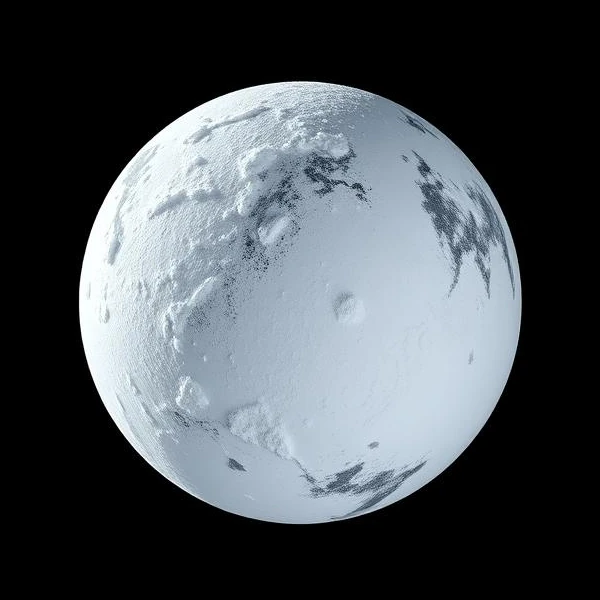
Earth has experienced two major ice ages in its history: the Huronian glaciation about 2.4 to 2.1 billion years ago and the Cryogenian glaciation between 720 and 635 million years ago. These events transformed our planet into a "snowball," with average temperatures dropping to \(-50^\circ\mathrm{C}\).
| Glaciation | Period | Duration | Impact on life |
|---|---|---|---|
| Huronian | 2.4 - 2.1 Ga | 300 million years | Cyanobacteria crisis, first mass extinction |
| Cryogenian | 720 - 635 Ma | 85 million years | Acceleration of evolution towards multicellular life |
The Huronian glaciation is considered the first major global ice age on our planet. It occurred in the late Archean (2.8–2.5 Ga) and early Proterozoic (2.5–2.0 Ga), marking a radical transformation of Earth's climate.
Geological evidence mainly comes from glacial deposits found in the Lake Huron region of Canada, from which this major climatic episode takes its name. Tillites, glacial striations, and oxide-rich layers are evidence of an extreme climate.
Several convergent factors are invoked:
The result was a "snowball Earth," where the oceans were almost completely covered by ice, with glacial extension reaching equatorial regions.
Despite the extreme conditions, life did not disappear. Photosynthetic microorganisms, already present, survived in oceanic refuges under the ice, probably near hydrothermal vents.
This glaciation also contributed to a massive biological selection and the emergence of a biosphere better adapted to climatic variations. It thus marks a critical step in the evolution of life.
After about 300 million years, the Huronian glaciation ended, leaving behind a profoundly transformed planet. Oxygen had accumulated stably in the atmosphere, paving the way for aerobic respiration and the evolution of more complex organisms.
Earth had just experienced its first global climate shift, a phenomenon that would recur several times throughout its history.
Earth's climate obeys the global radiative balance, which depends on the solar constant, planetary albedo, and surface temperature. Greenhouse gases modify this balance by trapping a fraction of infrared radiation. Any variation in their concentration results in climate sensitivity, expressed by radiative forcing (ΔF).
Quaternary glaciations are strongly correlated with variations in Earth's orbit:
These cycles, combined, generate variations in insolation that trigger or amplify glacial episodes.
Glaciations are not only forced by orbit: they rely on amplifying feedbacks:
The dynamics of the global ocean play a key role. Slowdowns in the AMOC (Atlantic Meridional Overturning Circulation) can block heat transport to high latitudes, accelerating glaciation.
Similarly, changes in cloud cover and water vapor distribution modulate the energy balance.
Over the long term, the carbon cycle controls climate stability:
The balance between these processes determines the end of glaciations.
When cooling exceeds a threshold (glacial extension beyond 30° latitude), Earth can enter a snowball state, where positive feedbacks dominate.
Deglaciation then requires a strong re-accumulation of atmospheric CO₂ (up to several % by volume), from volcanism, to break the icy stability.
Glaciations occur when several climatic factors combine: decreased solar radiation, changes in Earth's orbit (Milanković parameters), and reduced greenhouse gases such as CO2. The relationship between albedo and temperature follows a positive feedback described by \( \alpha = \frac{R_{reflected}}{R_{incident}} \) where \(( \alpha )\) increases with the extension of ice.
The Cryogenian glaciation, occurring between 720 and 635 million years ago, represents one of the most extreme climatic episodes in Earth's history. During this period, our planet experienced conditions close to a "snowball Earth", where the oceans were almost entirely covered by ice, even at low latitudes.
This glaciation belongs to the Neoproterozoic era (1 billion years to 542 ± 1 Ma), characterized by active tectonics and the fragmentation of the supercontinent Rodinia. The accelerated weathering of continental rocks led to a decrease in atmospheric carbon dioxide, reducing the greenhouse effect and plunging Earth into a prolonged glacial state.
The Snowball Earth model proposes that ice reached equatorial regions. The high albedo (\(\alpha \approx 0.6\)) would then have reinforced global cooling, trapping Earth in a glacial feedback loop. Average temperatures would have dropped to \(-40 °C\) on the continents, making the oceans almost entirely frozen to depths of several hundred meters.
Despite these extreme conditions, life did not go extinct. Microbial refuges would have persisted in volcanic areas, epicontinental seas partially free of ice, or under translucent ice sheets allowing light to pass through. These ecological niches would have prepared the way for the biodiversity explosion that followed, notably the Cambrian explosion.
The end of this ice age is attributed to the massive accumulation of volcanic CO₂, reaching concentrations above \(10^{4}\) ppm, about 25 times higher than the current level (~420 ppm). This excess greenhouse gas triggered a sudden global warming, causing the global melting of ice and the formation of characteristic carbonate deposits called cap carbonates.
N.B.:
Cap carbonates are layers of carbonate rocks deposited just after the melting of Cryogenian ice. They result from the massive precipitation of carbonates in CO₂-enriched oceans (up to \(10^{4}\) ppm), marking the abrupt transition from an extreme glacial climate to intense greenhouse conditions.
The two major glaciations, the Huronian (~2.4–2.1 Ga) and the Cryogenian (~720–635 Ma), illustrate Earth's ability to shift into extreme climatic states due to geochemical and atmospheric feedbacks. The Huronian, caused by the rise of atmospheric oxygen and the reduction of CO₂, plunged the planet into a cooling lasting several hundred million years, while the Cryogenian led to more intense but shorter "snowball Earth" episodes, with volcanic CO₂ concentrations exceeding \(10^{4}\) ppm, about 25 times the current level.
These glacial periods, far from being biological dead ends, exerted major selective pressure on organisms, favoring the gradual emergence of new life forms and preparing the ground for the evolution of complex biodiversity.